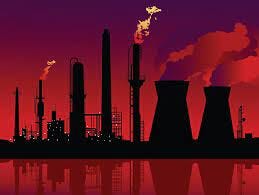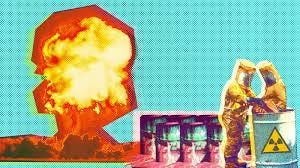Energy-rich Scotland doesn't need costly and dangerous nuclear power
To avoid further contamination, Scotland must end this toxic union


Two recent letters responding to Tory nuclear energy minister, Andrew Bowie, and Paul Wilson in The Scotsman, who call for more nuclear power plants in Scotland. The first appeared in the Edinburgh Evening News on December 7th, but The Scotsman chose not to publish the second.
I wonder if Andrew Bowie, the clueless, youthful ministerial cheerleader for nuclear power, is concerned at all about leaks coming from a huge silo of radioactive waste at the crumbling Sellafield nuclear site.
Norway, Ireland and the US certainly are. Norway is worried that an accident could lead to a radioactive plume that would contaminate food production and harm wildlife and is even considering providing funding to help manage the site. In 2006, Ireland, concerned about Sellafield’s environmental impact, referred it to a UN tribunal. US diplomats have expressed alarm over its aging infrastructure and the UK’s lack of transparency over dangers at the site.
Described as one of the “highest nuclear hazards in the UK,” Sellafield stores and treats nuclear waste from weapons manufacture and power generation. Formerly known as Windscale, the site of the UK’s worst nuclear accident in 1957, a 2001 EU report highlighted Sellafield’s problems, warning that another accident could be far worse than the 1986 Chernobyl disaster that spread radiation over northern Europe.
Sellafield is a perfect symbol for the failing UK. To avoid further contamination, Scotland must end this toxic union.
Paul Wilson ignores the main reason nuclear power hasn’t ‘taken off’. It’s not economic. Nuclear costs 2.6 times more per unit than gas and 3.7 times more than wind.[1] Government subsidies and guarantees are needed because the nuclear industry is an open-ended liability. A nuclear plant has never been fully decommissioned and many believe it would cost more than the original construction.
Second, nuclear power has facilitated, not stopped, the proliferation of nuclear weapons. India produced its first plutonium in a Canadian supplied reactor, exploding its first nuclear bomb in 1974. Nations like Iran are following suit.
Third, accidents have dogged the industry from the beginning. In 1957 the Windscale reactor that produced plutonium and tritium for UK atomic and hydrogen bombs caught fire. The site, now known as Sellafield, is leaking radioactive waste from a huge silo, alarming Ireland, Norway and the US, and should alarm Scotland the most.
Fourth, there’s no safe solution for nuclear waste. The UK has used Scotland as its dumping ground. The Solway Firth and Irish Sea are polluted with 60 years of Windscale discharges. The UK plans to bury waste from 27 nuclear submarines at Rosyth in nearby dumps at a cost of £3b, and is blasting the Irish seabed and Solway Firth in a damaging search for a place to store waste.
Fifth, former heads of nuclear regulation in the US, Germany and France issued a 2022 joint statement that nuclear wasn’t the answer to climate change due to its high cost, accident risks and waste.
It doesn’t matter what Oliver Stone, Bono and Greta Thunberg think. What should matter is that the sovereign Scottish People remain implacably opposed to nuclear power and weapons.



